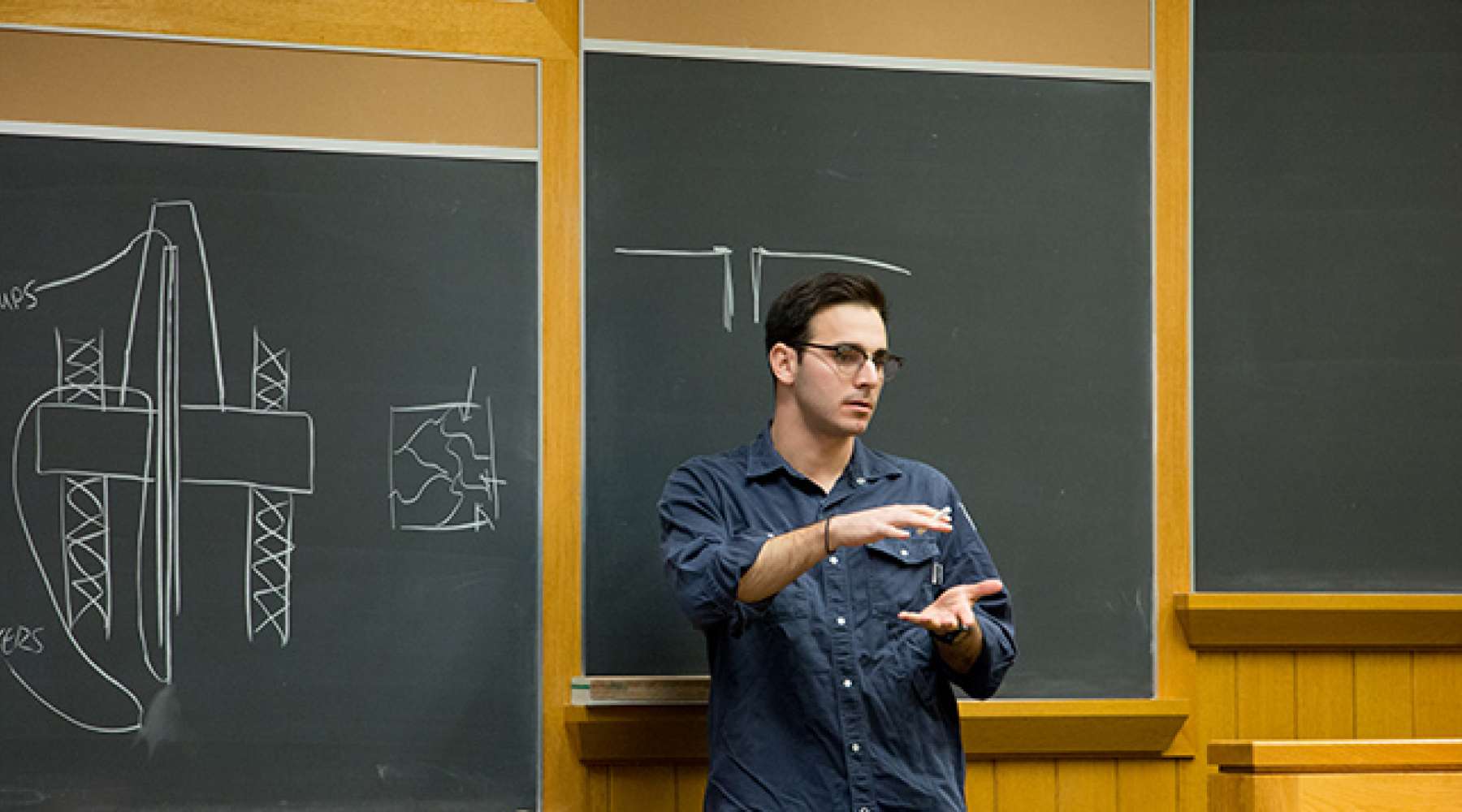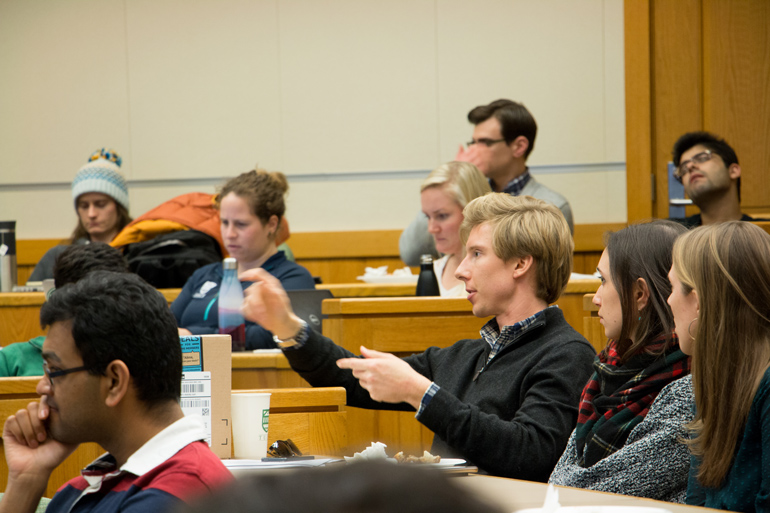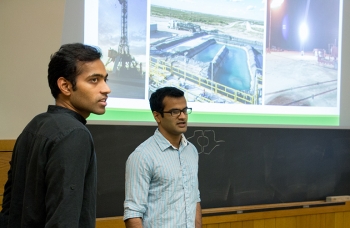
I quickly realized this would not be your average lecture when I saw my classmates dressed in oil-soaked and grease-stained work shirts from their past employers. Their clothing and the vivid images in the first few slides transported us to bustling drilling sites in West Texas and the Gulf of Mexico. This lecture, Drilling 101, brought together four Tuck students who worked across the world on drilling rigs to share their unique experiences in the oil industry with other students.
The presentation was broken into two sections; first, a deep dive into the drilling process, then a broad overview of the industry highlighting exploration, production, refining, and transport. As we learned how drilling rigs functioned, I began to comprehend the complexity of drilling a hole into the ground. The first obstacle, the water table, is a layer of water that lies just below the surface of the earth and is the water that eventually comes through our faucets. To prevent oil from contaminating the water, concrete is poured around the drill to prevent oil from leaking into the water table. If you thought the complications ended there—you’re wrong. Once the drill is deep in the earth, the pressure from gases between rocks can rush up to the surface and create an explosion known as a blowout. To prevent blowouts drillers carefully monitor the amount of drilling lubricant fluids going into the well through the drill compared to the amount of fluid that comes back out. If the amounts are the same, everything is good. These and other simple and elegant solutions to seemingly very complicated problems continued to amaze me throughout the presentation.

The discussion followed with cautionary tales of what can happen when things do not go according to plan—images of Piper Alpha and Deepwater Horizon triggered feelings of unease as our peers explained the systematic failures that allowed these tragedies to happen. Despite the number of checks and tests that are performed daily it appeared these events stemmed from negligence. One of my takeaways was that the best safety tests and alarms only work if people adhere to them.
 An examination of how drilling fits into the larger energy industry and what happens to crude oil once it has been extracted concluded the lecture. From the rig, the oil is processed so that it is transportable and then is sent by tanker, train,or pipeline to power plants, refineries, and eventually to you and me for daily necessities such as fueling our cars and heating our homes. I’ve heard countless figures about how much oil the world consumes in a day, but I left Drilling 101 with a greater appreciation for the complexities of extracting that oil from the earth and a better understanding of my classmates and their time living and working on offshore rigs and job sites.
An examination of how drilling fits into the larger energy industry and what happens to crude oil once it has been extracted concluded the lecture. From the rig, the oil is processed so that it is transportable and then is sent by tanker, train,or pipeline to power plants, refineries, and eventually to you and me for daily necessities such as fueling our cars and heating our homes. I’ve heard countless figures about how much oil the world consumes in a day, but I left Drilling 101 with a greater appreciation for the complexities of extracting that oil from the earth and a better understanding of my classmates and their time living and working on offshore rigs and job sites.
Scott is a Pennsylvania native who studied mechanical engineering at Lehigh University and worked for John Deere in various engineering and manufacturing functions prior to arriving at Tuck. He plans to spend this summer working in J.P. Morgan’s investment banking division.